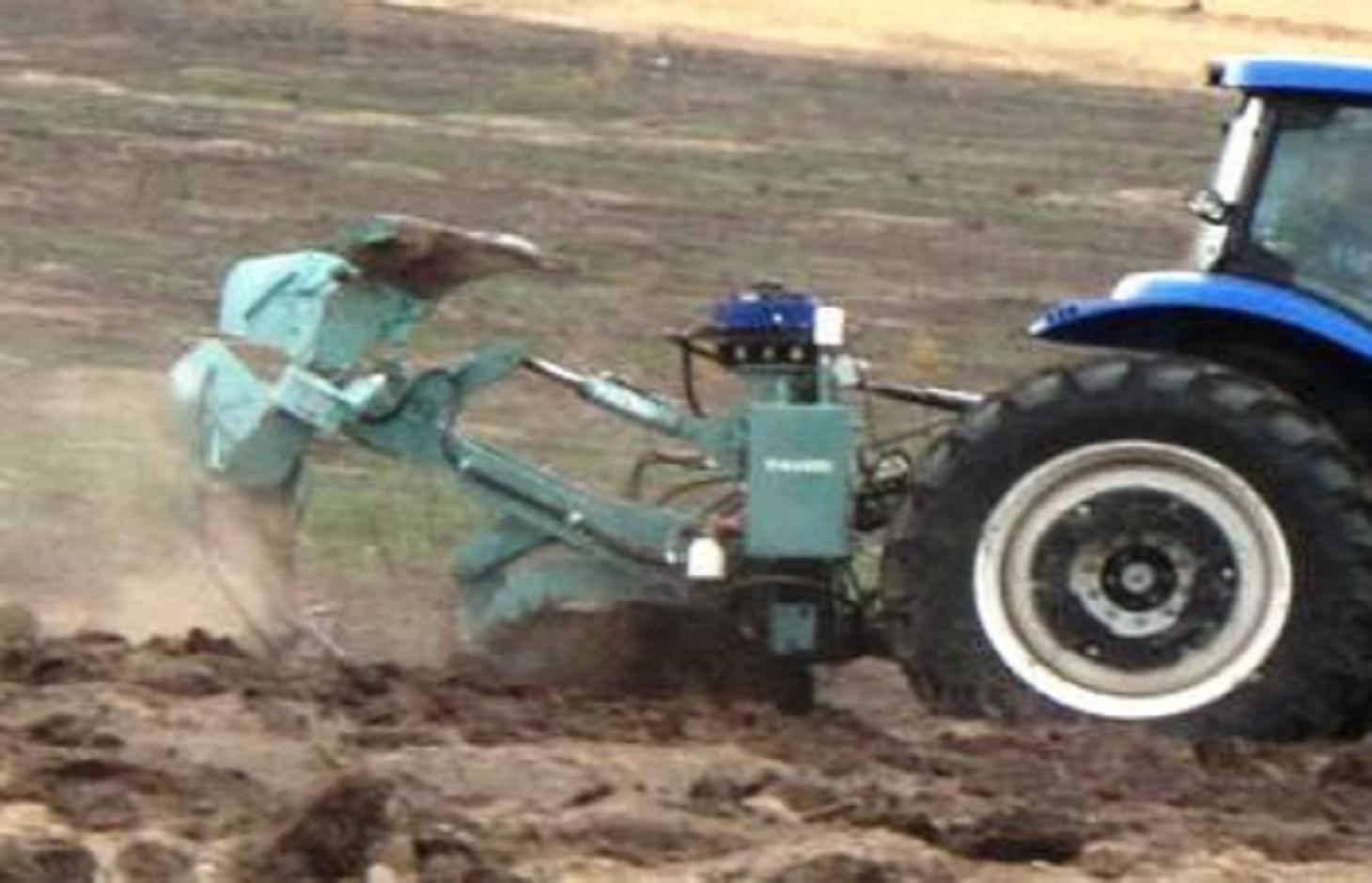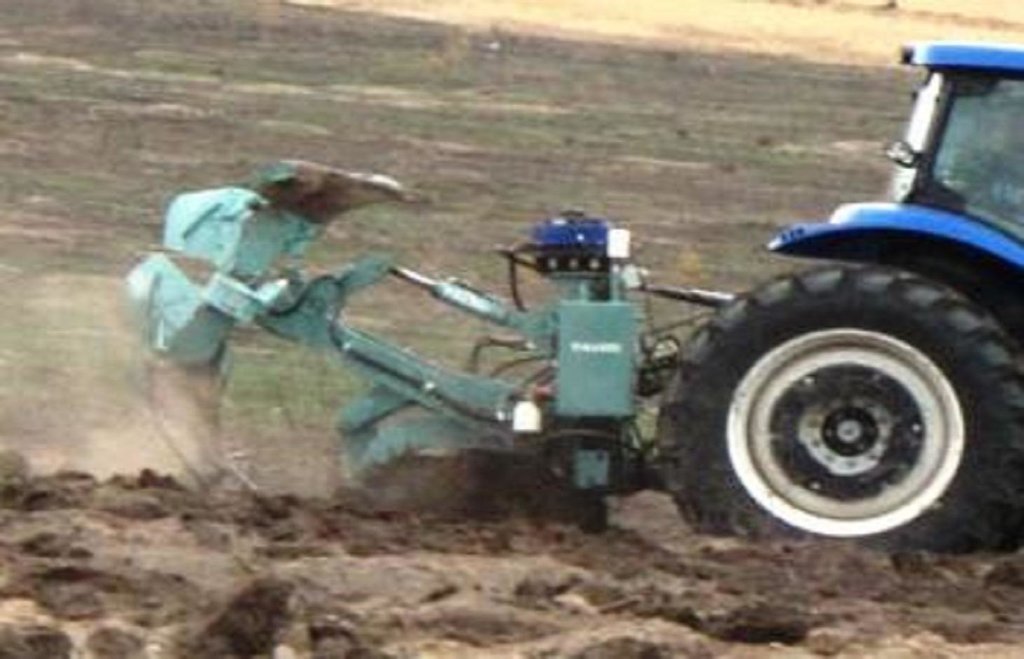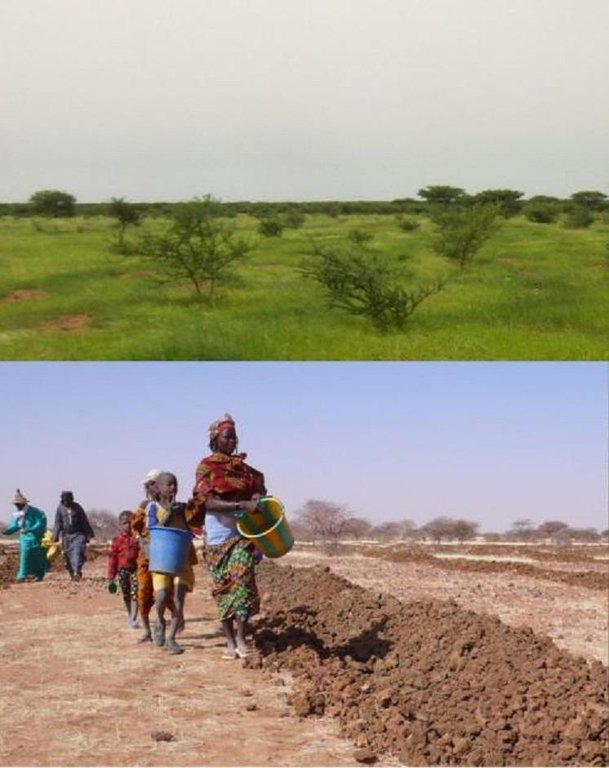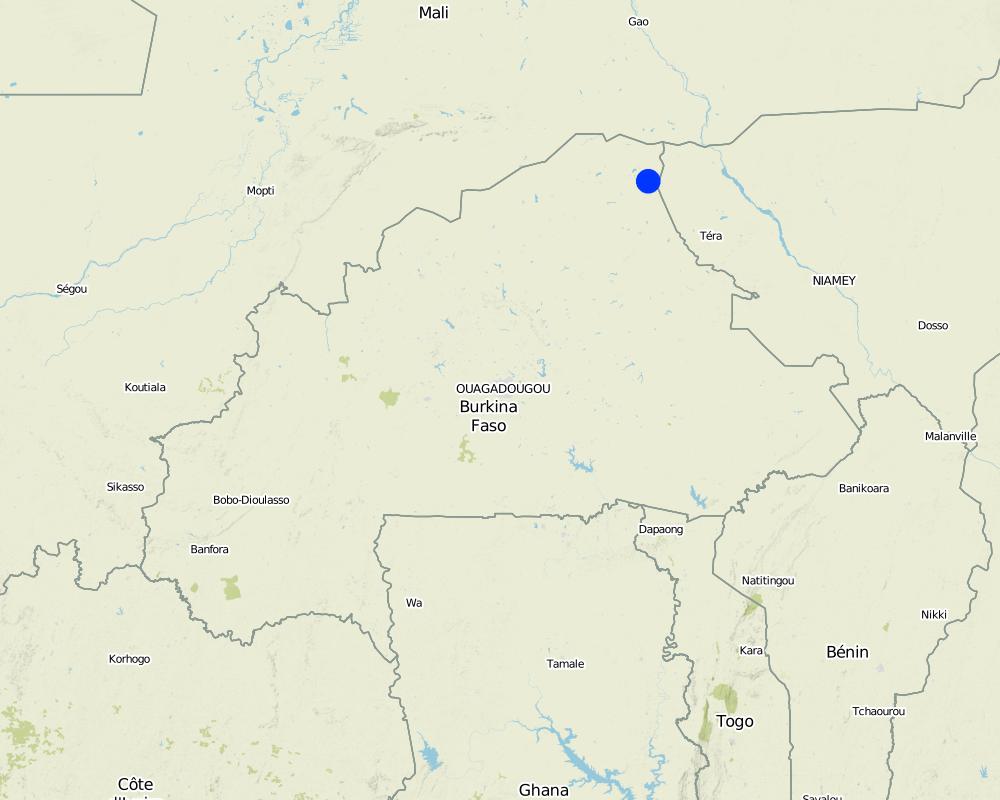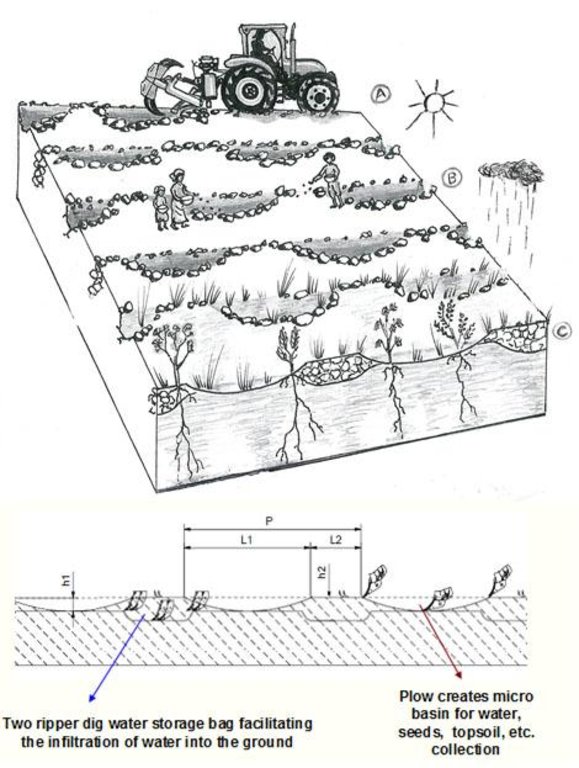Vallerani system [ប្រទេសបួគីណាហ្វាសូ]
- ការបង្កើត៖
- បច្ចុប្បន្នភាព
- អ្នកចងក្រង៖ Sabina Galli Vallerani
- អ្នកកែសម្រួល៖ –
- អ្នកត្រួតពិនិត្យ Deborah Niggli
technologies_1528 - ប្រទេសបួគីណាហ្វាសូ
- សង្ខេបជា PDF
- សេចក្តីសង្ខេបពេញលេញជាទម្រង់ PDF សម្រាប់បោះពុម្ព
- សេចក្តីសង្ខេបពេញលេញទម្រង់អ៊ីនធឺនេត
- សេចក្តីសង្ខេបពេញលេញ (មិនមានទម្រង់ជាក់លាក់)
- Vallerani System: 16 ខែ កក្កដា ឆ្នាំ 2018 (inactive)
- Vallerani System: 16 ខែ កក្កដា ឆ្នាំ 2018 (inactive)
- Vallerani System: 12 ខែ កក្កដា ឆ្នាំ 2018 (inactive)
- Vallerani System: 15 ខែ សីហា ឆ្នាំ 2018 (inactive)
- Vallerani system: 4 ខែ មេសា ឆ្នាំ 2018 (inactive)
- Vallerani system: 4 ខែ មករា ឆ្នាំ 2017 (inactive)
- Vallerani System: 30 ខែ កញ្ញា ឆ្នាំ 2020 (public)
- Vallerani System: 8 ខែ មិនា ឆ្នាំ 2019 (inactive)
ពិនិត្យមើលគ្រប់ផ្នែក
ពង្រីកមើលទាំងអស់ បង្រួមទាំងអស់1. ព័ត៌មានទូទៅ
1.2 ព័ត៌មានលម្អិតពីបុគ្គលសំខាន់ៗ និងស្ថាប័នដែលចូលរួមក្នុងការវាយតម្លៃ និងចងក្រងឯកសារនៃបច្ចេកទេស
ឈ្មោះគម្រោងដែលបានចងក្រងឯកសារ/ វាយតម្លៃលើបច្ចេកទេស (បើទាក់ទង)
Book project: Water Harvesting – Guidelines to Good Practice (Water Harvesting)1.3 លក្ខខណ្ឌទាក់ទងទៅនឹងការប្រើប្រាស់ទិន្នន័យដែលបានចងក្រងតាមរយៈ វ៉ូខេត
តើពេលណាដែលទិន្នន័យបានចងក្រង (នៅទីវាល)?
03/05/2012
អ្នកចងក្រង និង(បុគ្គលសំខាន់ៗ)យល់ព្រមទទួលយកនូវលក្ខខណ្ឌនានាទាក់ទងទៅនឹងការប្រើប្រាស់ទិន្នន័យដែលបានចងក្រងតាមរយៈវ៉ូខេត:
បាទ/ចា៎
1.4 សេចក្តីប្រកាសស្តីពីចីរភាពនៃការពណ៌នាពីបច្ចេកទេស
តើបច្ចេកទេសដែលបានពណ៌នានេះមានបញ្ហាដែលផ្តោតលើការធ្លាក់ចុះគុណភាពដី, បើដូច្នេះវាមិនអាចត្រូវបានប្រកាសថាជាបច្ចេកទេសនៃការគ្រប់គ្រងប្រកបដោយចីរភាពទេ?
ទេ
2. ការពណ៌នាពីបច្ចេកទេស SLM
2.1 ការពណ៌នាដោយសង្ខេបពីបច្ចេកទេស
និយមន័យបច្ចេកទេស:
A special tractor-pulled plough that automatically constructs water-harvesting catchments, ideally suited for large-scale reclamation work.
2.2 ការពណ៌នាលម្អិតពីបច្ចេកទេស
ការពណ៌នា:
The Vallerani implement is a modified plow named Delfino3, pulled by a heavy-duty tractor. A normal plow on flat land excavates a symmetrical furrow, and earth piles up equally on both sides of the furrow. The Delfino3 plow has a single reversible plowshare that creates an angled furrow and piles up the excavated soil only on the lower (downhill) side. This soil forms a ridge that stops or slows down runoff water as it flows downhill. The plow’s blade moves up and down (i.e. in and out of the soil), creating micro basins about 5 meters long, 50 cm deep and spaced about 2 m, each with a ridge. Two ripper placed before the plow work the soil to a depth of 70 cm, rise at the basin and descend between the basins. Thus to attain, in the stretch of land between the crescent, a collection bag which receives water from the crescents itself. Even with very low rainfall (150-500 mm/year) each micro-basin/storage bag can collect 1500 litres of water, including runoff. This water is protected against evaporation and remains available to plant roots and groundwater.
The Vallerani System is based on direct sowing of seeds of shrubs and trees of locally available, indigenous species. They are sown along the ridges of the basins and in the wake of the ripper. In the case study area Acacia tortilis, Ziziphus mauritania, Balanites aegyptiaca, Acacia senegal, Acacia seyal and Faidherbia albida have been sown. While for most species seeds can be collected by the local population, for species rarely present in the region, the seeds have to be purchased from tree nurseries. The use of goat excrements containing seeds has also proven successful (about 95% of all micro basin have at least one tree growing after 3 years) when directly sown. With more moisture available for a long time trees grow rapidly and the herbaceous cover improves in quality and in quantity - providing 20-30 times more livestock fodder (1000-2000kg dry herbaceous biomass ha/year), also helping to conserve the soil. The plowed and sown area is not protected by fences, grazing of animals shall be allowed so that villagers can benefit from the forage and reduce the accumulation of biomass fuel that would further the risk of fires in the dry season.
The Vallerani plow can ‘treat’ up to 20 ha, digging 5.720 micro basins, in a single day. The speed and effectiveness of the Delfino3 plow are its major advantages in the fight against desertification, but can also be its major limitation as to be able to make the best of it, it is necessary to find great availability of land to be reforested or cultivate. This is mainly possible related to a large public or business initiative. The spreading "like wildfire" that has characterized the case study was made possible by the presence on the territory of an NGO already active and rooted in the territory for many years and by perseverance, respect and competence of partner "of the North". Once the project has invested in the tractor and the plow (tractor ~ 70,000 EUR, plough ~ 40,000 EUR), the remaining cost of implementation – labour costs for local workers and drivers, fuel etc. amount to around EUR 125 / ha / year.
The case study area in the north east of Burkina Faso receives about 300-500 mm of annual rainfall. The soils of this agropastoral land are heavily degraded with a low tree density and an almost entirely absent herbaceous cover.
2.3 រូបភាពនៃបច្ចេកទេស
2.5 ប្រទេស/តំបន់/ទីតាំងកន្លែង ដែលបច្ចេកទេសត្រូវបានអនុវត្ត និងបានគ្រប់ដណ្តប់ដោយការវាយតម្លៃនេះ
ប្រទេស:
ប្រទេសបួគីណាហ្វាសូ
តំបន់/រដ្ឋ/ខេត្ត:
Oudalan
បញ្ជាក់បន្ថែមពីលក្ខណៈនៃទីតាំង:
Gorom-Gorom
Map
×2.6 កាលបរិច្ឆេទនៃការអនុវត្ត
ប្រសិនបើមិនច្បាស់ឆ្នាំ សូមបញ្ជាក់កាលបរិច្ឆេទដែលប្រហាក់ប្រហែល:
- 10-50 ឆ្នាំ
2.7 ការណែនាំពីបច្ចេកទេស
សូមបញ្ជាក់តើបច្ចេកទេសត្រូវបានណែនាំឱ្យអនុវត្តដោយរបៀបណា:
- ពេលកំពុងពិសោធន៍
3. ចំណាត់ថ្នាក់នៃបច្ចេកទេស SLM
3.1 គោលបំណងចម្បង (១ ឬច្រើន) នៃបច្ចេកទេសនេះ
- ធ្វើឱ្យប្រសើរឡើងនូវផលិតកម្ម
- កាត់បន្ថយ, បង្ការ, ស្តារឡើងវិញនូវការធ្លាក់ចុះគុណភាពដី
3.2 ប្រភេទដីប្រើប្រាស់មួយប្រភេទ (ច្រើនប្រភេទ) ដែលបានអនុវត្តបច្ចេកទេស

ដីសម្រាប់ចិញ្ចឹមសត្វ
ដីវាលស្មៅធំៗ:
- ពាក់កណ្តាលពនេចរ

ចម្រុះ (ដំណាំ/ វាលស្មៅ/ ដើមឈើ)គិតទាំងកសិរុក្ខកម្ម
មតិយោបល់:
Major land use problems (compiler’s opinion): Land degradation-desertification with reduction of vegetation cover in terms of plant density and species diversity is the main problem: disappearance of grasses and trees, reduction of the size of the plants that are resistant and of the biological activity of the soil. Runoff, water and wind erosion increase. Drought and irregular precipitation have heavy consequences on soil fertility, availability of water for humans and livestock, and recharging groundwater.
3.3 ព័ត៌មានបន្ថែមអំពីអ្នកប្រើប្រាស់ដី
ការផ្គត់ផ្គង់ទឹកនៅកន្លែងអនុវត្តបច្ចេកទេស:
- ទឹកភ្លៀង
ចំនួនសារដែលដាំដំណាំក្នុងមួយឆ្នាំ:
- 1
សូមបញ្ជាក់:
Longest growing period in days: 90
3.4 ក្រុម SLM ដែលបច្ចេកទេសស្ថិតនៅក្នុង
- ការស្តុកទុកទឹក
3.5 ការសាយភាយនៃបច្ចេកទេស
មតិយោបល់:
Total area covered by the SLM Technology is 50 m2.
3.6 វិធានការ SLM ដែលបញ្ចូលនូវបច្ចេកទេស

វិធានការរុក្ខជាតិ
- V1: ឈើធំៗ និងដើមឈើតូចៗ
- V2: ស្មៅនិងរុក្ខជាតិៗដែលដុះមានអាយុមិនលើសពី 2ឆ្នាំ

វិធានការរចនាស័ម្ពន្ធ
- S4: កម្រិតភ្លឺ រណ្តៅ

វិធានការគ្រប់គ្រង
- M2: ការផ្លាស់ប្តូរការគ្រប់គ្រង/ កម្រិតអាំងតង់ស៊ីតេ
3.7 កំណត់ប្រភេទនៃការធ្លាក់ចុះគុណភាពដីសំខាន់ៗដែលបច្ចេកទេសនេះបានដោះស្រាយ

ការហូរច្រោះដីដោយសារទឹក
- Wt: ការបាត់ដីស្រទាប់លើដោយការហូរច្រោះ
- Wg: ការកកើតឡើងនូវកំទេចកំទីដីស្រទាប់ក្រោម

ការបាត់ដីដោយសារខ្យល់
- Et: ការបាត់បង់ដីស្រទាប់លើ

ការធ្លាក់ចុះសារធាតុគីមីក្នុងដី
- Cn: ការថយចុះជីជាតិ និងកាត់បន្ថយបរិមាណសារធាតុសរីរាង្គ (មិនកើតឡើងដោយការហូរច្រោះទេ)

ការបាត់បង់រូបសាស្ត្រនៃដី
- Pc: ការហាប់ណែន

ការធ្លាក់ចុះជីវសាស្ត្រនៃដី
- Bc: ការថយចុះនូវគម្របរុក្ខជាតិ
- Bh: ការបាត់បង់ទីជំរក
- Bs: សមាសភាពដែលមានគុណភាពនិងប្រភេទសត្វ/ការថយចុះនូវជីវចម្រុះ
មតិយោបល់:
Main causes of degradation: over-exploitation of vegetation for domestic use, overgrazing, change of seasonal rainfall, droughts
Secondary causes of degradation: deforestation / removal of natural vegetation (incl. forest fires), education, access to knowledge and support services
3.8 ការពារ កាត់បន្ថយ ឬស្តារឡើងវិញនៃការធ្លាក់ចុះគុណភាពដី
បញ្ជាក់ពីគោលដៅរបស់បច្ចេកទេស ដែលផ្តោតទៅការធ្លាក់ចុះគុណភាពដី:
- ការជួសជុល/ ស្តារឡើងវិញនៃឱនភាពដីធ្ងន់ធ្ងរ
4. បច្ចេកទេសជាក់លាក់ សកម្មភាពអនុវត្ត ធាតុចូល និងថ្លៃដើម
4.1 គំនូសបច្ចេកទេសនៃបច្ចេកទេសនេះ
4.2 លក្ខណៈពិសេសនៃបច្ចេកទេស/ ពណ៌នាពីគំនូរបច្ចេកទេស
Above:
A. The land chosen together with the local population is plowed with the special Delfino3 plow. B. Local people sow seeds (collected from local trees or bought if species are rare) or goat dung containing seeds (collected in the night enclosures after feeding the goats shaking trees with ripe seeds). C. The micro basins collect the rain that falls into the crescents and 50% of the runoff water. The water easily penetrates into the soil, fills the storage bags, remains available to plant roots and drains into the groundwater without risk of evaporation. Each micro basin/storage bag can collect up to 1.500 l of water.
Below
h1-Depth of the ploughshares work: =40/50 cm
Width of the micro basin: 40/50 cm
L1-Length of the micro basin, programmable: =3,5/5 m
h2 Depth of the rippers work: =50/80 cm
P-Total length of work: 4/8 m
Tractors horsepower 210/250 (150-198 Kw)
Working speed: 4/7 Km/h
Weight : 2000 Kg
Location: Oudalan, Gorom Gorom province. Burkina Faso
Technical knowledge required for field staff / advisors: high
Main technical functions: control of raindrop splash, improvement of ground cover, improvement of topsoil structure (compaction), stabilisation of soil (eg by tree roots against land slides), water harvesting / increase water supply, increase of biomass (quantity), promotion of vegetation species and varieties (quality, eg palatable fodder)
Secondary technical functions: increase in organic matter, increase in nutrient availability (supply, recycling,…), increase of infiltration, increase / maintain water stored in soil
Retention/infiltration ditch/pit, sediment/sand trap
Spacing between structures (m): 0.5
Depth of ditches/pits/dams (m): 2
Length of ditches/pits/dams (m): 5
Change of land use practices / intensity level
4.4 សកម្មភាពបង្កើត
| សកម្មភាព | ប្រភេទវិធានការ | ពេលវេលា | |
|---|---|---|---|
| 1. | Project planning, consulting and training by VS and national experts | រចនាសម្ព័ន្ធ | |
| 2. | Plowing with the Delfino special plow pulled by a 210hp tractor | រចនាសម្ព័ន្ធ | Dry season |
| 3. | Seed harvesting can be done by local people either collecting them directly from plants or by shaking the plants at the appropriate time, to feed the goats and sheep with the fallen seeds and collect their dung in the night enclosure | រចនាសម្ព័ន្ធ | |
| 4. | Missing seeds can be purchased in local markets or, if trees are too rare or if the species is no longer present, seeds must be purchased at a nursery | រចនាសម្ព័ន្ធ | When seeds are ripe |
| 5. | Direct sowing | រចនាសម្ព័ន្ធ | Dry season |
4.5 ថ្លៃដើម និងធាតុចូលដែលត្រូវការសម្រាប់ការបង្កើតបច្ចេកទេស
| បញ្ជាក់ពីធាតុចូល | ឯកតា | បរិមាណ | ថ្លៃដើមក្នុងមួយឯកតា | ថ្លៃធាតុចូលសរុប | % នៃថ្លៃដើមដែលចំណាយដោយអ្នកប្រើប្រាស់ដី | |
|---|---|---|---|---|---|---|
| កម្លាំងពលកម្ម | labour | ha | 1,0 | 72,0 | 72,0 | 50,0 |
| សម្ភារៈ | machine use | ha | 1,0 | 23,4 | 23,4 | |
| ថ្លៃដើមសរុបក្នុងការបង្កើតបច្ចេកទេស | 95,4 | |||||
4.6 សកម្មភាពថែទាំ
| សកម្មភាព | ប្រភេទវិធានការ | ពេលវេលា/ ភាពញឹកញាប់ | |
|---|---|---|---|
| 1. | No maintenance activities are required | រចនាសម្ព័ន្ធ |
4.7 កំណត់ថ្លៃដើមសម្រាប់ការថែទាំ/ សកម្មភាពរបស់បច្ចេកទេស (ក្នុងរយៈពេលមួយឆ្នាំ)
មតិយោបល់:
All data presented in the table refer to an ideal project which lasts 5 years with 3000 hectares plowed each year. All works are carried for economic retribution. Item number 1 refers to the planning, training and consulting engineers that has a strong impact on the cost per ha ($47). This voice would remain the same if 3 MTU (Mechanized Technical Unit) were used in the same area reducing its impact to $ 15,6 per ha.
4.8 កត្តាសំខាន់បំផុតដែលមានឥទ្ធិពលដល់ការចំណាយ
ពណ៌នាពីកត្តាប៉ះពាល់ចម្បងៗទៅលើថ្លៃដើម:
Upfront costs for the aquisition of the required materials are around 40,000 EUR for the plough and 70,000 EUR for the tractor.
5. លក្ខណៈបរិស្ថានធម្មជាតិ និងមនុស្ស
5.1 អាកាសធាតុ
បរិមាណទឹកភ្លៀងប្រចាំឆ្នាំ
- < 250 មម
- 251-500 មម
- 501-750 មម
- 751-1,000 មម
- 1,001-1,500 មម
- 1,501-2,000 មម
- 2,001-3,000 មម
- 3,001-4,000 មម
- > 4,000 មម
លក្ខណៈពិសេស/ មតិយោបល់លើរដូវភ្លៀង:
400-600 mm
តំបន់កសិអាកាសធាតុ
- ស្ងួត
Thermal climate class: subtropics
5.2 សណ្ឋានដី
ជម្រាលជាមធ្យម:
- រាបស្មើ (0-2%)
- ជម្រាលតិចតួច (3-5%)
- មធ្យម (6-10%)
- ជម្រាលខ្ពស់បន្តិច (11-15%)
- ទីទួល (16-30%)
- ទីទួលចោត (31-60%)
- ទីទួលចោតខ្លាំង (>60%)
ទម្រង់ដី:
- ខ្ពង់រាប
- កំពូលភ្នំ
- ជម្រាលភ្នំ
- ជម្រាលទួល
- ជម្រាលជើងភ្នំ
- បាតជ្រលងភ្នំ
តំបន់តាមរយៈកម្ពស់ :
- 0-100 ម
- 101-500 ម
- 501-1,000 ម
- 1,001-1,500 ម
- 1,501-2,000 ម
- 2,001-2,500 ម
- 2,501-3,000 ម
- 3,001-4,000 ម
- > 4,000 ម
5.3 ដី
ជម្រៅដីជាមធ្យម:
- រាក់ខ្លាំង (0-20 សម)
- រាក់ (21-50 សម)
- មធ្យម (51-80 សម)
- ជ្រៅ (81-120 សម)
- ជ្រៅខ្លាំង (> 120 សម)
វាយនភាពដី (ស្រទាប់លើ):
- គ្រើម/ មានពន្លឺ (ខ្សាច់)
សារធាតុសរីរាង្គនៅស្រទាប់ដីខាងលើ:
- ទាប (<1%)
5.4 ទឹកដែលអាចទាញមកប្រើប្រាស់បាន និងគុណភាពទឹក
នីវ៉ូទឹកក្រោមដី:
> 50 ម
ទឹកលើដីដែលអាចទាញយកប្រើប្រាស់បាន:
ល្អ
គុណភាពទឹក (មិនបានធ្វើប្រត្តិកម្ម):
ទឹកសម្រាប់តែការធ្វើកសិកម្ម (ស្រោចស្រព)
5.5 ជីវៈចម្រុះ
ភាពសម្បូរបែបនៃប្រភេទ:
- ទាប
5.6 លក្ខណៈនៃអ្នកប្រើប្រាស់ដីដែលអនុវត្តបច្ចេកទេស
ចំណូលក្រៅកសិកម្ម:
- តិចជាង 10% នៃចំណូល
ឯកជន ឬក្រុម:
- ជាក្រុម/ សហគមន៍
យេនឌ័រ:
- ស្ត្រី
- បុរស
សូមបញ្ជាក់ពីលក្ខណៈពាក់ព័ន្ធផ្សេងទៀតអំពីអ្នកប្រើប្រាស់ដី:
Land users applying the Technology are mainly common / average land users
Difference in the involvement of women and men: The project involves the reforestation and reconstruction of the herbaceous layer for the grazing of livestock that are male dominated activities. Since 2010 women have sown special plants for medical use, domestic use and as raw material for crafts and protected them from grazing.
Population density: 10-50 persons/km2
Annual population growth: 3% - 4%
Off-farm income specification: The only activity people of the region are engaged in is goat and cattle breading. Crop production is practiced only for subsistence use.
5.7 ទំហំផ្ទៃដីជាមធ្យមនៃដីផ្ទាល់ខ្លួន ឬជួលគេដែលបានអនុវត្តបច្ចេកទេស
- < 0.5 ហិកតា
- 0.5-1 ហិកតា
- 1-2 ហិកតា
- 2-5 ហិកតា
- 5-15 ហិកតា
- 15-50 ហិកតា
- 50-100 ហិកតា
- 100-500 ហិកតា
- 500-1,000 ហិកតា
- 1,000-10,000 ហិកតា
- > 10,000 ហិកតា
តើផ្ទៃដីនេះចាត់ទុកជាទំហំកម្រិតណាដែរ ខ្នាតតូច មធ្យម ឬខ្នាតធំ (ធៀបនឹងបរិបទតំបន់)?
- ខ្នាតតូច
5.8 ភាពជាម្ចាស់ដី កម្មសិទ្ធប្រើប្រាស់ដី និងកម្មសិទ្ធប្រើប្រាស់ទឹក
ភាពជាម្ចាស់ដី:
- រដ្ឋ
- ភូមិ
កម្មសិទ្ធិប្រើប្រាស់ដី:
- អាស្រ័យផលសេរី (មិនមានការកំណត់)
- ជាក្រុម (មានដែនកំណត់)
កម្មសិទ្ធប្រើប្រាស់ទឹក:
- អាស្រ័យផលសេរី (មិនមានការកំណត់)
- ជាក្រុម (មានដែនកំណត់)
5.9 ការប្រើប្រាស់សេវាកម្ម និងហេដ្ឋារចនាសម្ព័ន្ធ
សុខភាព:
- មិនល្អ
- មធ្យម
- ល្អ
ការអប់រំ:
- មិនល្អ
- មធ្យម
- ល្អ
ជំនួយបច្ចេកទេស:
- មិនល្អ
- មធ្យម
- ល្អ
ការងារ (ឧ. ការងារក្រៅកសិដ្ឋាន):
- មិនល្អ
- មធ្យម
- ល្អ
ទីផ្សារ:
- មិនល្អ
- មធ្យម
- ល្អ
ថាមពល:
- មិនល្អ
- មធ្យម
- ល្អ
ផ្លូវ និងការដឹកជញ្ជូន:
- មិនល្អ
- មធ្យម
- ល្អ
ទឹកផឹក និងអនាម័យ:
- មិនល្អ
- មធ្យម
- ល្អ
សេវាកម្មហិរញ្ញវត្ថុ:
- មិនល្អ
- មធ្យម
- ល្អ
6. ផលប៉ះពាល់ និងការសន្និដ្ឋាន
6.1 ផលប៉ះពាល់ក្នុងបរិវេណអនុវត្តបច្ចេកទេសដែលកើតមាន
ផលប៉ះពាល់លើសេដ្ឋកិច្ចសង្គម
ផលិតផល
ផលិតកម្មចំណីសត្វ
មតិយោបល់/ ការបញ្ជាក់:
up to 30% more than before implementation
គុណភាពចំណីសត្វ
ផលិតកម្មឈើ
គុណភាពមុន SLM:
50 trees/ha
គុណភាពក្រោយ SLM:
350 trees/ha
ផលប៉ះពាល់ទៅលើវប្បធម៌សង្គម
សន្តិសុខស្បៀង/ ភាពគ្រប់គ្រាន់ខ្លួនឯង
មតិយោបល់/ ការបញ្ជាក់:
The technology can be applied for agriculture producing 2 to 4 times more than with traditional systems
ស្ថានភាពសុខភាព
មតិយោបល់/ ការបញ្ជាក់:
No more malnutrition=better health!
ឱកាសវប្បធម៍
ឱកាសនៃការបង្កើតថ្មី
មតិយោបល់/ ការបញ្ជាក់:
More wood, fodder and water available= more time available
ស្ថាប័នសហគមន៍
មតិយោបល់/ ការបញ្ជាក់:
Old, young and woman work together for common benefits
ស្ថាប័នជាតិ
មតិយោបល់/ ការបញ្ជាក់:
Were applied on large scale
ចំណេះដឹង SLM / ការធ្លាក់ចុះគុណភាពដី
មតិយោបល់/ ការបញ្ជាក់:
Environment education in theory and practice, is part of the system
ការកាត់បន្ថយជម្លោះ
មតិយោបល់/ ការបញ្ជាក់:
More fodder and water highly reduces conflict motivations
ស្ថានភាពក្រុមដែលមានបញ្ហាក្នុងសង្គម និងសេដ្ឋកិច្ច
មតិយោបល់/ ការបញ្ជាក់:
Women have collected, sown and protected medicinal plants and plants for raw materials for handcrafts to sell at the market
Training of skilled labour in disadvantaged regions
មតិយោបល់/ ការបញ្ជាក់:
Chance to find good jobs
contribution to human well-being
មតិយោបល់/ ការបញ្ជាក់:
Thanks to the enormous increase of trees, pasture and crop production, the quality of life and health of men and animals have improved considerably.
ផលប៉ះពាល់ទៅលើអេកូឡូស៊ី
វដ្តទឹក/លំហូរ
ការប្រមូលស្តុកទុកទឹក
លំហូរទឹកលើផ្ទៃដី
នីវ៉ូទឹកក្រោមដី/ ដង្ហើមទឹក
ដី
សំណើមដី
ការបាត់បង់ដី
ដីហាប់
វដ្តនៃសារធាតុចិញ្ចឹម/ការទទួលបាន
សារធាតុសរីរាង្គដី/ការបូនក្រោមដី
ជីវចម្រុះ៖ ដំណាំ, សត្វ
ជីវម៉ាស/ កាបូនលើដី
ការកាត់បន្ថយហានិភ័យនៃគ្រោះមហន្តរាយ និងគ្រោះអាកាសធាតុ
ហានិភ័យនៃភ្លើងឆេះព្រៃ
មតិយោបល់/ ការបញ្ជាក់:
Through the high soil cover with trees and grass fire risk increase, this is avoided through open access to grazing.
ផលប៉ះពាល់ទៅលើអេកូឡូស៊ីផ្សេងៗ
Increased threat from wild animals
មតិយោបល់/ ការបញ្ជាក់:
Biodiversity highly increases, local people might be afraid of some animals coming back like jackal or snakes
6.2 ផលប៉ះពាល់ក្រៅបរិវេណអនុវត្តបច្ចេកទេសដែលកើតមាន
ទឹកជំនន់ខ្សែទឹកខាងក្រោម
ខូចខាតដល់ហេដ្ឋារចនាសម្ព័ន្ធសាធារណៈ/ឯកជន
6.3 ភាពប្រឈម និងភាពរួសនៃបច្ចេកទេសទៅនឹងការប្រែប្រួលអាកាសធាតុ និងគ្រោះអាកាសធាតុ/ គ្រោះមហន្តរាយ (ដែលដឹងដោយអ្នកប្រើប្រាស់ដី)
ការប្រែប្រួលអាកាសធាតុ
ការប្រែប្រួលអាកាសធាតុ
| រដូវកាល | ប្រភេទនៃការប្រែប្រួលអាកាសធាតុ/ព្រឹត្តិការណ៍ | លក្ខណៈឆ្លើយតបនៃបច្ចេកទេសទៅនឹងការប្រែប្រួលអាកាសធាតុ | |
|---|---|---|---|
| សីតុណ្ហភាពប្រចាំឆ្នាំ | កើនឡើង | ល្អ |
គ្រោះអាកាសធាតុ (មហន្តរាយ)
គ្រោះមហន្តរាយធម្មជាតិ
| លក្ខណៈឆ្លើយតបនៃបច្ចេកទេសទៅនឹងការប្រែប្រួលអាកាសធាតុ | |
|---|---|
| ព្យុះភ្លៀងតាមតំបន់ | ល្អ |
| ព្យុះកំបុតត្បូងតាមតំបន់ | ល្អ |
គ្រោះមហន្តរាយអាកាសធាតុ
| លក្ខណៈឆ្លើយតបនៃបច្ចេកទេសទៅនឹងការប្រែប្រួលអាកាសធាតុ | |
|---|---|
| រាំងស្ងួត | ល្អ |
គ្រោះមហន្តរាយទឹក
| លក្ខណៈឆ្លើយតបនៃបច្ចេកទេសទៅនឹងការប្រែប្រួលអាកាសធាតុ | |
|---|---|
| ទឹកជំនន់ទូទៅ (ទន្លេ) | មិនស្គាល់ |
ផលវិបាកដែលទាក់ទងនឹងបរិយាកាសផ្សេងៗទៀត
ផលវិបាកដែលទាក់ទងនឹងបរិយាកាសផ្សេងៗទៀត
| លក្ខណៈឆ្លើយតបនៃបច្ចេកទេសទៅនឹងការប្រែប្រួលអាកាសធាតុ | |
|---|---|
| កាត់បន្ថយពេលដាំដុះ | ល្អ |
6.4 ការវិភាគថ្លៃដើម និងអត្ថប្រយោជន៍
តើផលចំណេញ និងថ្លៃដើមត្រូវបានប្រៀបធៀបគ្នាយ៉ាងដូចម្តេច (ទស្សនៈរបស់អ្នកប្រើប្រាស់ដី)?
រយៈពេលខ្លី:
អវិជ្ជមានខ្លាំង
រយៈពេលវែង:
វិជ្ជមានខ្លាំង
តើផលចំណេញ និងការថែទាំ/ ជួសជុលត្រូវបានប្រៀបធៀបគ្នាយ៉ាងដូចម្តេច (ទស្សនៈរបស់អ្នកប្រើប្រាស់ដី)?
រយៈពេលខ្លី:
អវិជ្ជមាន
រយៈពេលវែង:
វិជ្ជមានខ្លាំង
6.5 ការទទួលយកបច្ចេកទេស
- ច្រើនជាង 50%
ក្នុងចំណោមគ្រួសារទាំងអស់ដែលអនុវត្តបច្ចេកទេស តើមានប៉ុន្មានគ្រួសារដែលចង់ធ្វើដោយខ្លួនឯង ដោយមិនទទួលបានសម្ភារៈលើកទឹកចិត្ត/ប្រាក់ឧបត្ថម្ភ?:
- 0-10%
មតិយោបល់:
100% of land user families have adopted the Technology with external material support
Comments on acceptance with external material support: The system includes the use of a heavy duty tractor and a special plow whose costs are high though difficult to sustain by the local population. All correlated activities are done (or can be done) without external material support
There is a strong trend towards spontaneous adoption of the Technology
The system includes the use of a heavy duty tractor and a special plow whose cost is high though difficult to sustain by the local population. All other activities part of the system are practicable from the population under an initial guidance of someone with specific training. Where the technology is known there is active participation of local people and a strong demand for new interventions
6.7 ភាពខ្លាំង/ គុណសម្បត្តិ/ ឱកាសនៃបច្ចេកទេស
| ភាពខ្លាំង/ គុណសម្បត្តិ/ ឱកាស ទស្សនៈរបស់បុគ្គលសំខាន់ៗ |
|---|
| This practice allows for the rapid and efficient treatment of large degraded areas within a short time |
| The tree and shrub species planted are mainly indigenous and locally adapted species |
| Through its tillage process the Vallerani system offers the highest degree of efficiency in the first years from processing. Its effects last for a long time so it does not need to be repeated on the same site |
| The VS does not use any water (except rain) in countries where water is rare and precious. It further avoids the risk of soil salinisation. |
| The delfino3 can plow strongly degraded land, this makes that local people often ask to work their worse land |
6.8 ភាពខ្សោយ/ គុណវិបត្តិ/ ហានិភ័យនៃបច្ចេកទេស និងវិធីសាស្ត្រដោះស្រាយ
| ភាពខ្សោយ/ គុណវិបត្តិ/ ហានិភ័យ ទស្សនៈរបស់អ្នកចងក្រងឬបុគ្គលសំខាន់ៗ | តើបច្ចេកទេសទាំងនោះបានដោះស្រាយបញ្ហាដូចម្តេច? |
|---|---|
| The investment costs for the machinery are extremely high and cannot be covered by single land users or even communities | projects must be financed externally |
| The speed and effectiveness of the Delfino3 plow are its major advantages in the fight against desertification, but can also be its major limitation as to be able to make the best of it, it is necessary to find great availability of land to be reforested or cultivate | This is mainly possible related to a large public or business initiative. The spreading "like wildfire" that has characterized the case study was made possible by the presence on the territory of an NGO already active and rooted in the territory for many years and by perseverance, respect and competence of the partner "of the North" |
| Since great extentions will be processed, a big organisation is needed for all activities (awareness raising, collecting seeds, personnel training, logistics, etc), | this must be well organized and should operate already before starting plowing |
7. ឯកសារយោង និងវេបសាយ
7.1 វិធីសាស្ត្រ/ ប្រភពនៃព័ត៌មាន
- តាមការចុះទីវាល ការស្រាវជ្រាវនៅទីវាល
- ការសម្ភាសន៍ជាមួយអ្នកប្រើប្រាស់ដី
7.2 ឯកសារយោងដែលបានចេញផ្សាយ
ចំណងជើង អ្នកនិពន្ធ ឆ្នាំ ISBN:
Conedera, M., N. Bomio-Pacciorini, et al. 2010. Reconstitution des écosystèmes dégradés sahéliens. Bois et Forêts des Tropiques 304(2).
មានប្រភពមកពីណា? ថ្លៃដើមប៉ុន្មាន?
http://www.vallerani.com/images/Reconstitution.pdf
ចំណងជើង អ្នកនិពន្ធ ឆ្នាំ ISBN:
Akhtar Ali, Theib Oweis, Atef Abdul Aal, Mohamed Mudabbar, Khaled Zubaidi, and Adriana Bruggeman. 2006. The Vallerani Water Harvesting System. ICARDA Caravan No. 23.
មានប្រភពមកពីណា? ថ្លៃដើមប៉ុន្មាន?
http://www.vallerani.com/images/Caravan-23.pdf
ការតភ្ជាប់ និងម៉ូឌុល
ពង្រីកមើលទាំងអស់ បង្រួមទាំងអស់ការតភ្ជាប់
គ្មានការតភ្ជាប់
ម៉ូឌុល
គ្មានម៉ូឌុល


